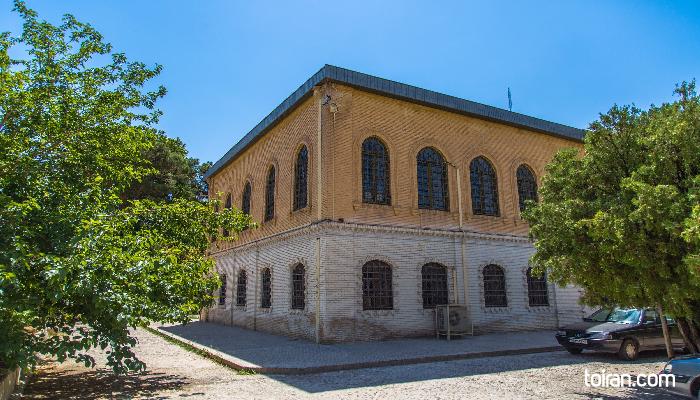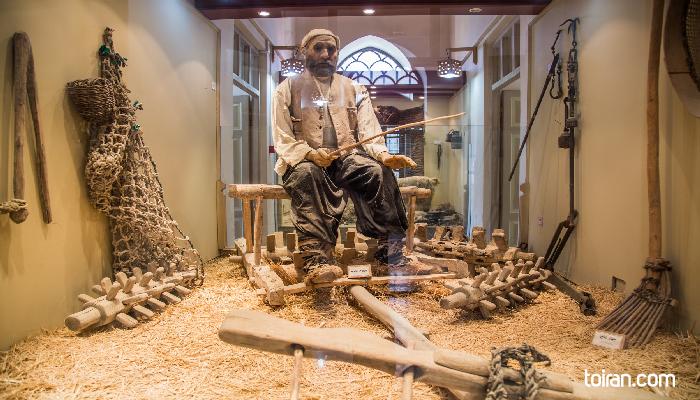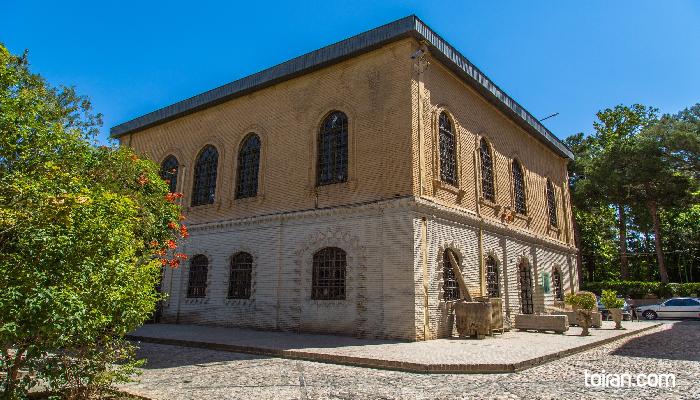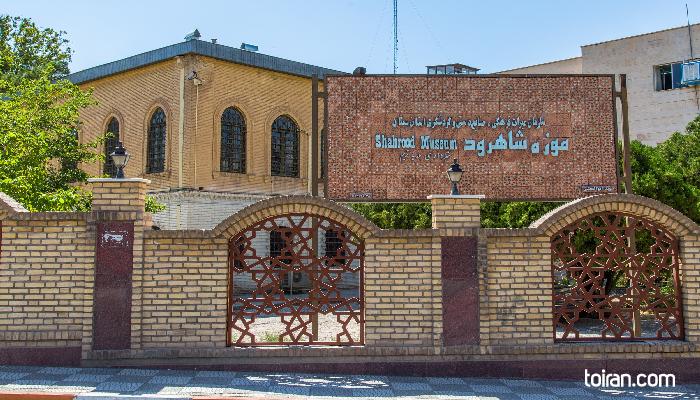The Municipality Monument of Shahroud was built in two stories in 1928 and has late Qajar era (1785-1925) and early Pahlavi era (1925-1979) architecture. After renovations, the building became the location of Shahroud Museum in 1989. Shahroud Museum has an Archeology and an Anthropology section.
Located on the first floor of the museum, the Archeology displays showcase artifacts from historical sites in Semnan Province such as Damghan’s Tepe Hissar and Bastam’s Tepe Sang-e Chakhmaq. These items are displayed in six halls and are datable to the 1st, 3rd, 4th and 6th millennia BC as well as the Islamic era.
The oldest artifact in the museum dates back to the 6th millennium BC and was found in Tepe Sang-e Chakhmaq excavations. Other items in this part of the museum include 4th millennium BC cream-colored pottery with floral and animal motifs from Tepe Hissar, grey pottery from the 3rd millennium BC, fetal burial vessels from the 1st millennium BC, bronze, stone, clay and bone tools, needles made of bone, sickle and knife handles, stone blades, bronze and alloy oil lamps, bracelets, rings, and hair clips as well as grave stones from the Qajar and Safavid (1501–1736) eras. This part of the museum also displays coins from various historical eras including the Parthian (247 BC–224 CE), Seleucid (312 –63 BC) and Safavid eras.
The Anthropology section of the museum is located on the second floor of the building and has four halls. In this part of the museum items including farming and animal husbandry tools, clothes, traditional bread baking tools, traditional jewelry, handmade textiles, documents and deeds, Persian Passion Play equipment, traditional medical equipment, spinning wheels, smoking tools, old lamps, blacksmith bellows and Quran manuscripts are on display. The Anthropology section of the museum also displays traditional outfits such as women’s coats, Shaliteh (short pleated puffy skirts), embroidered hats and dresses, Charqad (traditional headscarves) and wool socks.





